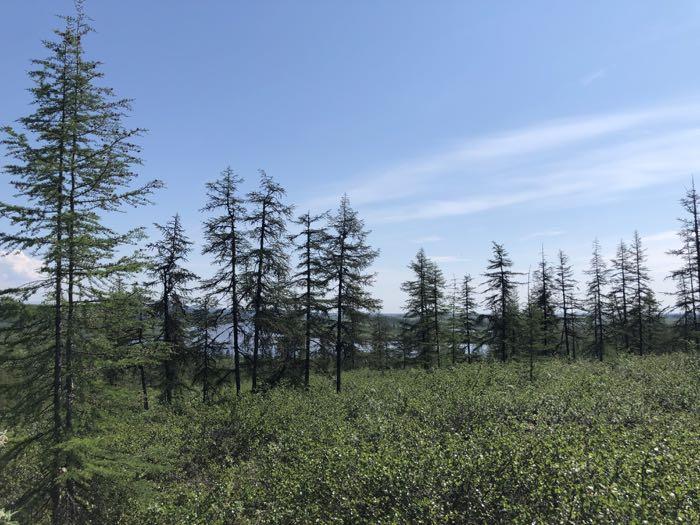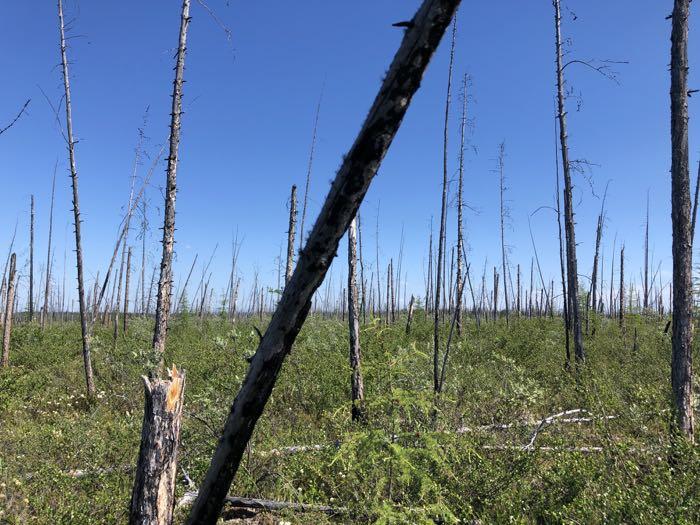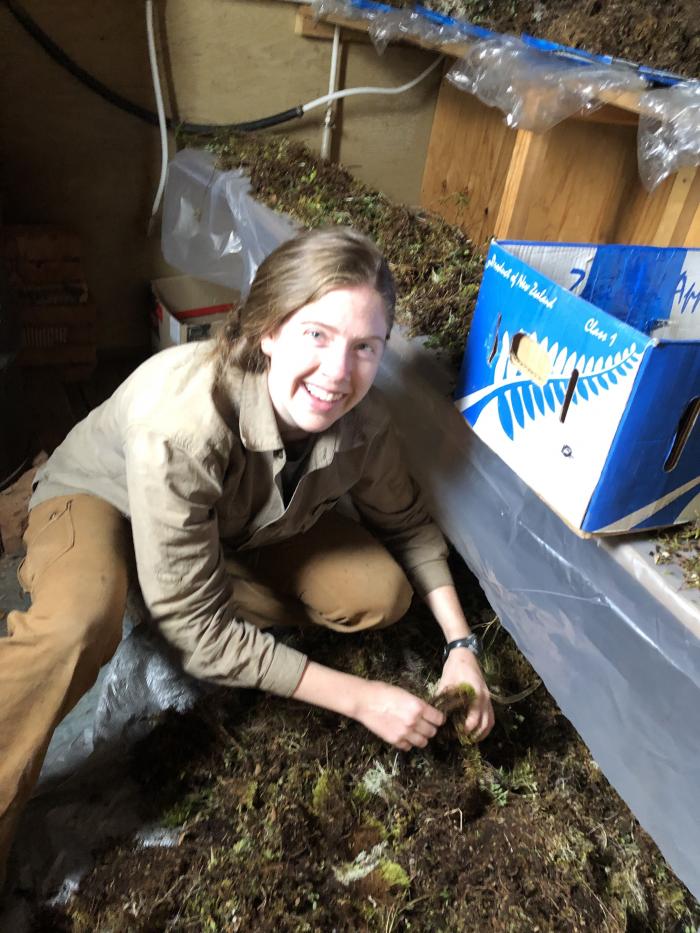"The real voyage of discovery consists not in seeking new landscapes, but in having new eyes." -Marcel Proust
Background Information:
What is carbon? Plants, trees, soil, animals and even humans are made of carbon. Carbon molecules are the building blocks of all living things. Fire severity refers to how much carbon is lost during a fire. In a forest, carbon is found in a variety of places, trees, shrubs, grasses, soils and roots. When fires sweep through a landscape, all the living things that burn release carbon into the atmosphere. Naturally, severe fires release more carbon into the atmosphere.

When looking at fire severity in larch, boreal forests, it is important to recognize that larch roots require mineral soil to grow. Mineral soils sit below the organic lay on the forest floor and consists of water and essential nutrients.
Following a severe fire, there is less organic layer and larch roots can access the mineral soil with greater ease. It is suggested that plots with severe fires may have more successful larch recruitment.

So increased fire severity is good, right? Well, severity is simply one piece of the puzzle. When fires are too severe, it is possible that landscapes are too scarred for successful tree recruitment. Additionally, fires that are too frequent could contribute to a failure of recruitment and grasslands and shrubs may take the place of lush larch forests.
Experimentation:
The U.S. Science team is collecting data to better understand how fire severity contributes to larch recruitment. To collect this data, they are setting up controlled burns that will vary in severity.
First, similar plots are identified, measured and marked. Next, vegetation characteristics are calculated and recorded using various tools including thaw depth probes, calipers, rulers etc.
Following characteristic data collection, plots are burned for various lengths of time to simulate different levels of fire severity, or at least this was the plan...
Thinking on your feet:
A problem was encountered during this phase of the process. Due to recent rain, the ground cover was too wet to burn. The team opted to remove various levels of organic matter at each plot, dry it out and return it to its original plot. Plots labeled "severe burns" had the most organic material removed and dried, whereas plots labeled "moderate" had less organic material removed and dried.

SOL (Soil Organic Layer)
After all the organic matter was dried, it was weighed and returned to the corresponding plot, from which it originated. The next step, burn the SOL.
What now?
Previously collected larch seeds will be spread at each plot. Next year, the team will return to these plots to identify larch recruitment success.


Comments